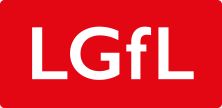Module 2C: Multisensory Literacy
There are a huge range of multisensory activities which can support literacy skills including reading and writing. This is particularly helpful for learners with learning difficulties such as dyslexia in this area.
Multisensory techniques can include using singing, sounding out, music and audio books to support spelling, reading and comprehension.
Visual props such as photos, animations, videos or real objects can also aid reading and stimulate writing and portable technology can also be used to enhance creative writing and scaffold learning.
Further sensory experiences involving touch, movement, and even smell and taste can be used to support literacy as the presentation in this area demonstrates. Many of the LGfL resources can provide support with this.

Supportive LGfL Resources
- www.audio.lgfl.net – thousands of music tracks which can be searched by key word
- www.widgit.lgfl.net – Widgit symbols to support reading and writing (see Widgit Activities and Literacy for specific resources)
- Many stories and further literacy activities can also be found on the LGfL site too. Go to Learning Resources and Literacy to find some examples

Key Points
- Multisensory learning can support literacy, particularly for learners with issues such as dyslexia
- Many LGfL resources can be used to support multisensory literacy

Thinking Point
Look at the presentation and associated LGfL resources to support multisensory literacy. How can you use these strategies or tools to support one of your literacy activities or interventions for a learner or group of learners you work with?


